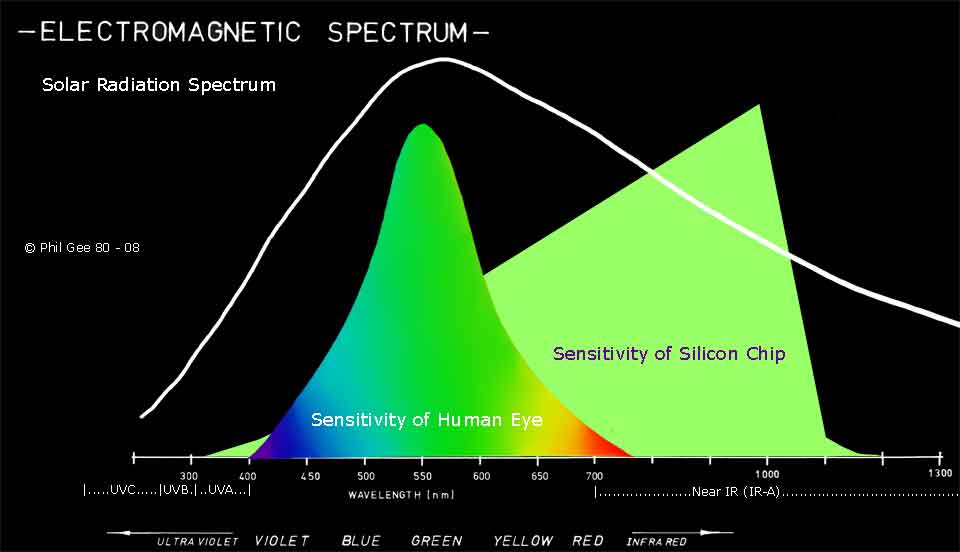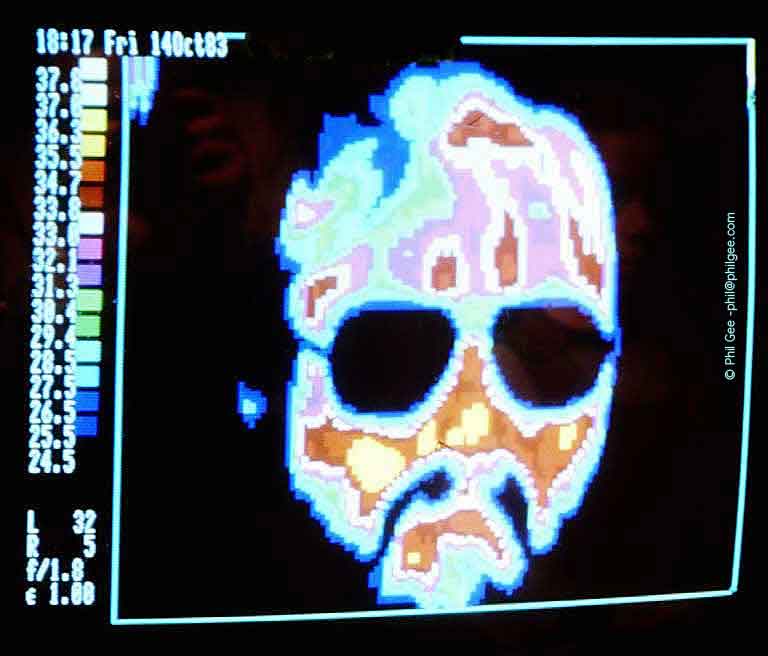Electromagnetic Spectrum

You can see from the graph that the sensitivity of the silicon chips used in modern digital cameras have a wider range of sensitivity than the human eye, these frequencies are filtered out by the use of filter slips over the chip.
By removing these filters we can extend our image making range of frequencies using a 'standard' digital camera to record in the UV and IR ranges unfortunately this will invalidate your manufacturers warrantee and is best carried out by a specialist unless you want to end up with a rather expensive paperweight.
Infra Red extends into the mm range (IR-A: 700nm - 1400nm; IR-B: 1400nm - 3000 nm; IR-C 3000 nm - 1mm) finds common application from the ubiquitous remote control IR channel selection device, to fiber optic telecommunications and at the longer wavelengths we are familiar with heat radiation effect.
Below is an example from the 80's a self portrait in false colour each colour representing a temperature in the calibrated range - chart to the left of image giving temperatures in deg C
The human body at normal temperature is emitting IR radiation in the Far IR (IR-C) band with a wavelength of approx. 10 µm (10000nm on above chart or 0.01mm) far outside the range of a Digital Camera sensor.
Human skin does reflect IR radiation in specific bands of the Near IR region properties which are finding applications in active detectors useful if you want to detect 'cold' human tissue.
